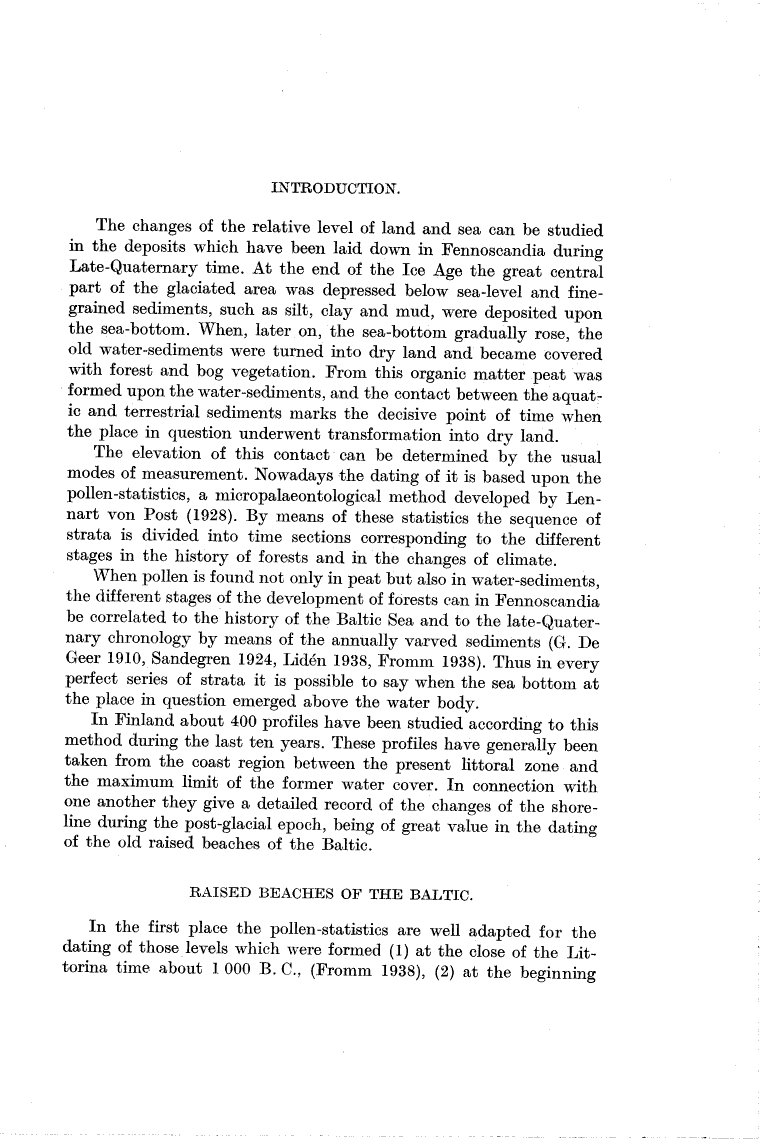
Full resolution (TIFF) - On this page / på denna sida - N:o 2 - Pages ...

<< prev. page << föreg. sida << >> nästa sida >> next page >>
Below is the raw OCR text
from the above scanned image.
Do you see an error? Proofread the page now!
Här nedan syns maskintolkade texten från faksimilbilden ovan.
Ser du något fel? Korrekturläs sidan nu!
This page has never been proofread. / Denna sida har aldrig korrekturlästs.
INTRODUCTION.
The changes of the relative level of land and sea can be studied
in the deposits which have been laid down in Fennoscandia during
Late-Quaternary time. At the end of the Ice Age the great central
part of the glaciated area was depressed below sea-level and
finegrained sediments, such as silt, clay and mud, were deposited upon
the sea-bottom. When, later on, the sea-bottom gradually rose, the
old water-sediments were turned into dry land and became covered
with forest and bog vegetation. From this organic matter peat was
formed upon the water-sediments, and the contact between the
aquatic and terrestrial sediments marks the decisive point of time when
the place in question underwent transformation into dry land.
The elevation of this contact can be determined by the usual
modes of measurement. Nowadays the dating of it is based upon the
pollen-statistics, a micropalaeontological method developed by
Lennart von Post (1928). By means of these statistics the sequence of
strata is divided into time sections corresponding to the different
stages in the history of forests and in the changes of climate.
When pollen is found not only in peat but also in water-sediments,
the different stages of the development of forests can in Fennoscandia
be correlated to the history of the Baltic Sea and to the
late-Quaternary chronology by means of the annually varved sediments (G. De
Geer 1910, Sandegren 1924, Liden 1938, Fromm 1938). Thus in every
perfect series of strata it is possible to say when the sea bottom at
the place in question emerged above the water body.
In Finland about 400 profiles have been studied according to this
method during the last ten years. These profiles have generally been
taken from the coast region between the present littoral zone and
the maximum limit of the former water cover. In connection with
one another they give a detailed record of the changes of the
shoreline during the post-glacial epoch, being of great value in the dating
of the old raised beaches of the Baltic.
RAISED BEACHES OF THE BALTIC.
In the first place the pollen-statistics are well adapted for the
dating of those levels which were formed (1) at the close of the
Lit-torina time about 1 000 B. C., (Fromm 1938), (2) at the beginning
<< prev. page << föreg. sida << >> nästa sida >> next page >>